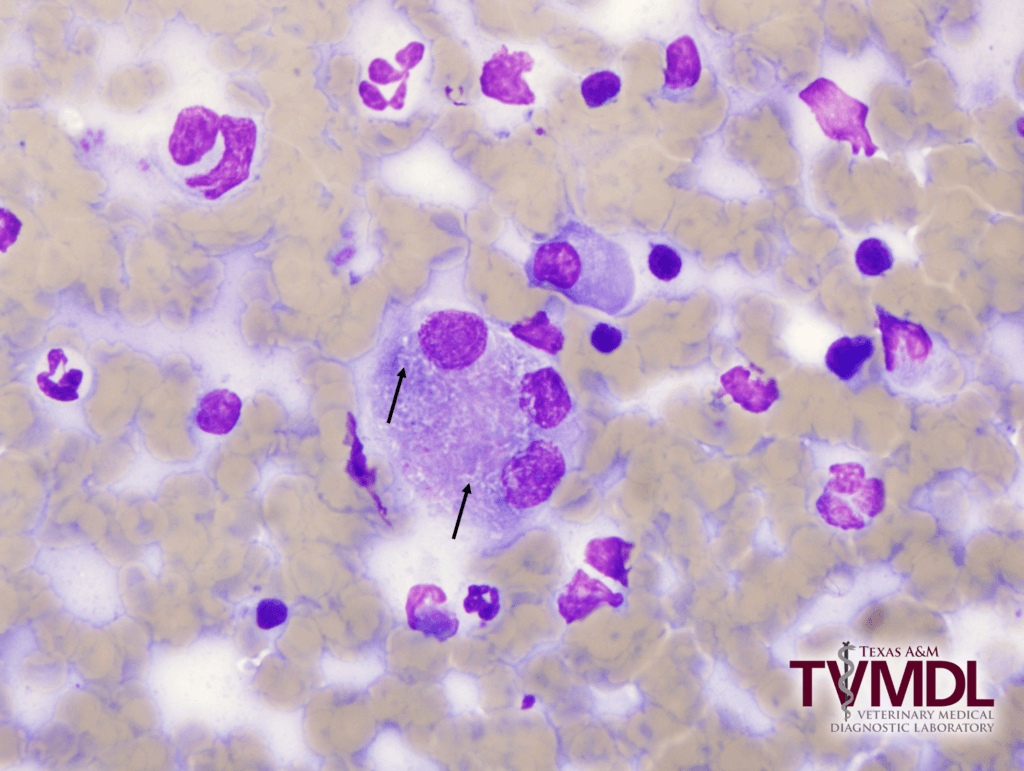Leproid Granuloma in a Boxer Dog
By Julie Piccione, DVM, MS, DACVP
A 6-year-old male-neutered Boxer was presented to its veterinarian for a mass on the right ear pinna. The mass was approximately 2 cm in diameter, slightly ulcerated and limited to the dermis. According to the owner, the mass had been present for approximately 2 weeks and was growing. Fine needle aspiration was performed. Slides were submitted to the Texas A&M Veterinary Medical Diagnostic Laboratory (TVMDL). Subsequent examination of those slides revealed marked mixed cell inflammation. Macrophages contained many small, non-staining (clear) linear structures, consistent with Mycobacterium sp. (Figure 1). The structures stained positive with an Acid-Fast preparation, as would be expected with Mycobacterium sp. The clinical description and cytologic findings were compatible with a leproid granuloma.
Mycobacterium organisms are found in the environment and may cause infections in immunosuppressed or immunocompetent animals. With leproid granulomas, infectious are thought to occur with penetrating objects and insect bites. Dogs diagnosed with leproid granuloma typically have one or more dermal masses on the head or ears without systemic signs of illness. This condition is most commonly reported in Boxers. These lesions can mimic histiocytomas and other round cell tumors grossly. Even on low magnification or cursory microscopy, these lesions can be mistaken for histiocytomas. Definitive diagnosis is typically obtained through cytology or histopathology. These bacteria are difficult to culture and a negative culture does not rule out Mycobacterium infections. While some cases may resolve without medical intervention, treatment typically includes surgical removal and combination antibiotic therapy.
For more information about this case, contact Clinical Pathology Section Head, Dr. Julie Piccione. To learn more about TVMDL’s test offerings, visit tvmdl.tamu.edu or call 1.888.646.5623.
